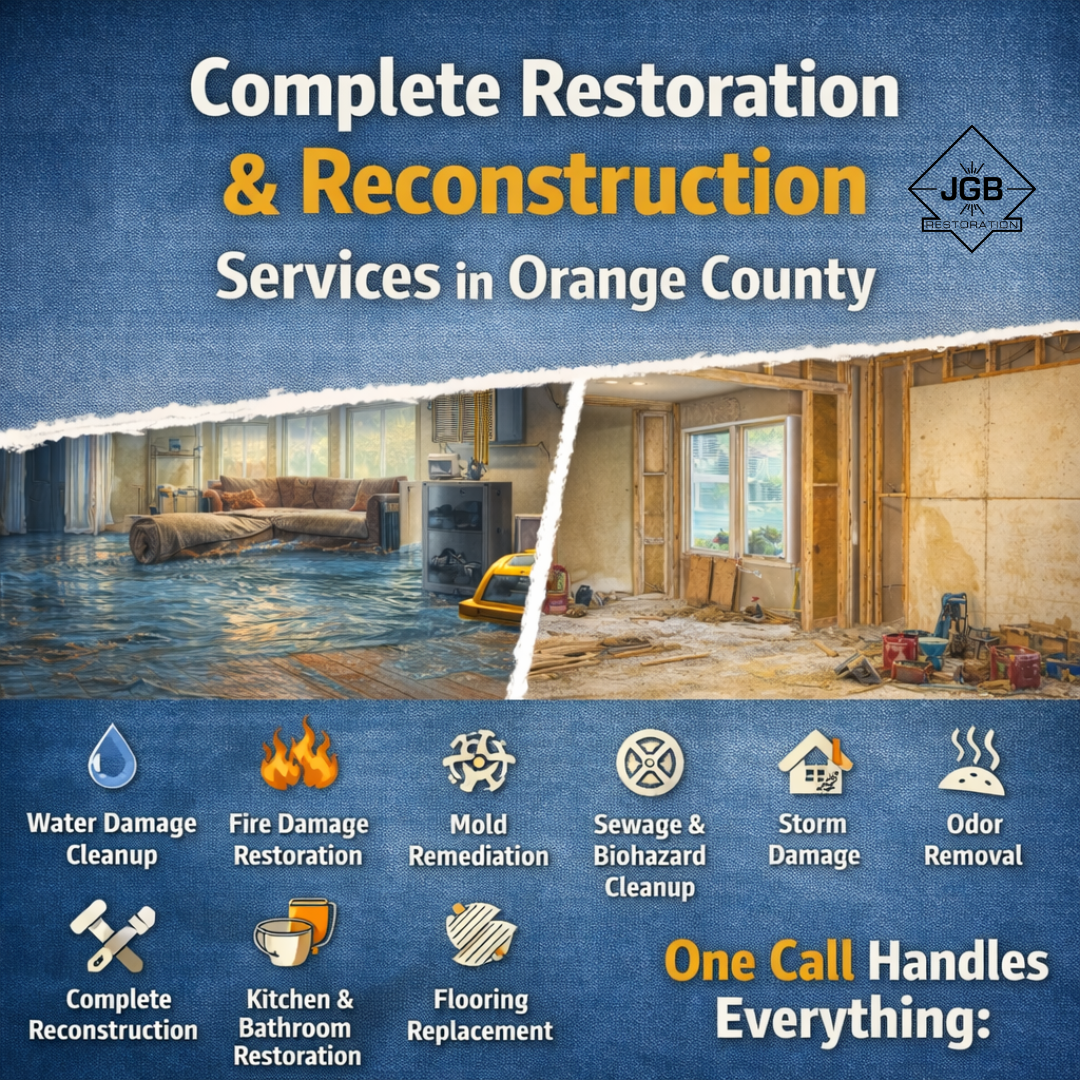Mold is more than just an unattractive problem; it also poses significant risks and compromises the structural integrity of your property. At JGB Restoration, we understand the urgency and complexity of mold issues. Here's a comprehensive guide to the four crucial steps in the mold remediation process, designed to ensure a safe and thorough restoration of your home or business.
Step 1: Comprehensive Assessment and Finding the Moisture Source
The journey to effective mold remediation begins with a detailed assessment or inspection. Our certified professionals conduct a thorough inspection to identify visible mold growth and detect hidden moisture sources that often go unnoticed. We use advanced tools like moisture meters and thermal imaging cameras to pinpoint areas of concern. Addressing the root cause—moisture—is the most important part of this step. Without resolving underlying issues such as leaks or condensation, mold is likely to return and eat at remediation efforts.
Step 2: Containment of Affected Areas
To prevent mold spores from spreading to unaffected parts of your property during remediation, we establish and set up containment measures. This involves isolating contaminated zones using physical barriers and establishing negative air pressure environments. Such precautions are necessary in halting the spread of mold spores, thereby protecting the rest of your home or business from cross-contamination.
Step 3: Safe Removal of Mold-Infested Materials
Mold infiltrates various materials, especially porous ones like drywall, carpeting, and insulation. In cases of severe contamination, these materials may need to be carefully removed and disposed of to eliminate dangerous mold. Our team follows industry best practices, ensuring that all mold-infested materials are handled safely and disposed of in compliance with local regulations. For non-porous surfaces, we employ specialized cleaning techniques to clean up mold spores without needing to remove any material.
Step 4: Cleaning, Disinfection, and Prevention Strategies
After removing contaminated materials, the next phase focuses on cleaning and disinfecting the affected areas. We utilize EPA-approved antimicrobial treatments to eliminate remaining mold spores and help prevent future growth. High-efficiency particulate air (HEPA) vacuums and air scrubbers are used to capture airborne spores, enhancing indoor air quality. Once cleaning is complete, we begin the preventive measures, such as improving ventilation and controlling humidity levels, to reduce the risk of mold coming back.
Understanding the Importance of Professional Mold Remediation
Mold is a widespread issue in the United States, with approximately 47 percent of residential buildings showing signs of visible mold or mold odor. At JGB Restoration, our expertise ensures that mold remediation is conducted thoroughly and safely, addressing both visible mold and underlying moisture problems to prevent future outbreaks.
Frequently Asked Questions
Q: How quickly does mold develop after water exposure?
A: Mold begins to grow within 24 to 48 hours following water exposure. Prompt action is important to halt its spread.
Q: Is it possible to remove mold completely from my property?
A: While it's challenging to eliminate all mold spores indoors, professional remediation significantly reduces mold levels to safe, natural levels.
Q: Is it possible to handle mold remediation on my own?
A: For small areas, DIY methods may suffice. However, for extensive mold growth, especially involving HVAC systems or structural components, professional remediation is recommended to ensure safety and effectiveness.
Q: How do I prevent mold from returning after remediation?
A: Preventive measures include controlling indoor humidity levels, promptly repairing leaks, ensuring adequate ventilation, and using mold-resistant building materials when possible.
Q: Are all types of mold dangerous?
A: Not all molds are hazardous, but certain types produce allergens and mycotoxins that may pose health risks. Professional assessment determines the potential danger and appropriate remediation steps.
At JGB Restoration, we're committed to restoring not only your property but also your peace of mind. If you're facing mold issues, don't hesitate to reach out to our team of experts for a comprehensive evaluation and tailored remediation plan.





